The popularity of Thai cuisine around the world.
Thai food is renowned worldwide, appreciated for its vibrant tastes and use of fresh ingredients. Its distinctive blend of sweet, sour, spicy, and salty flavors results in dishes that are both comforting and exciting. The rich flavors of Thai cuisine have been influenced by China, India, and Malaysia over centuries, resulting in a delightful fusion of cultures.
1: Pad thai: thailand’s famous noodle dish.
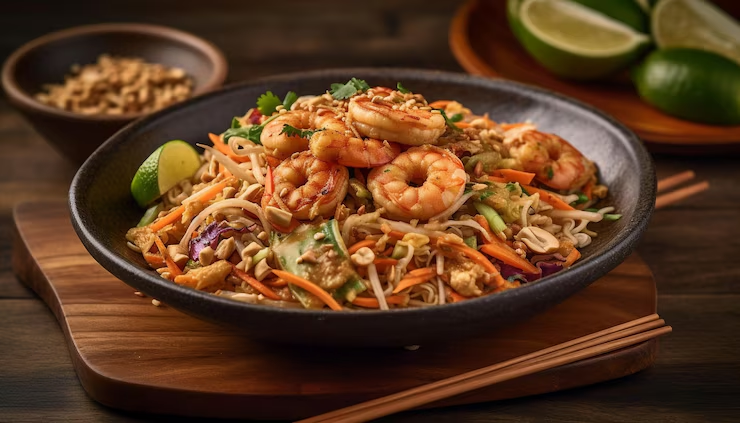
Pad thai is Thailand’s culinary ambassador, a stir-fried noodle dish that’s as versatile as it is delicious. Found everywhere from street carts to upscale restaurants, it combines rice noodles, shrimp or chicken, bean sprouts, eggs, and a tangy tamarind sauce, topped with crushed peanuts and a squeeze of lime.
What sets pad thai apart?
The allure of pad thai stems from its harmonious blend of textures and flavors—tender noodles, crunchy peanuts, and a sauce that’s sweet, tangy, and mildly spicy. It’s versatile, with vegetarian or tofu options widely accessible. To truly immerse yourself in the local culture, try it at a traditional street stall in Bangkok, where it’s served with freshly caught prawns.
Where to find the best pad thai.
Street vendors in bangkok’s chinatown (yaowarat) or chiang mai’s night markets serve pad thai that’s both affordable and authentic, often costing just 50-80 thb ($1.50-$2.50). For an exceptional culinary experience, consider visiting Raan Jay Fai in Bangkok, renowned for its legendary crab-filled pad thai, although it may come at a slightly higher price of around 400 baht ($12).
2:Tom yum goong: the spicy shrimp soup.
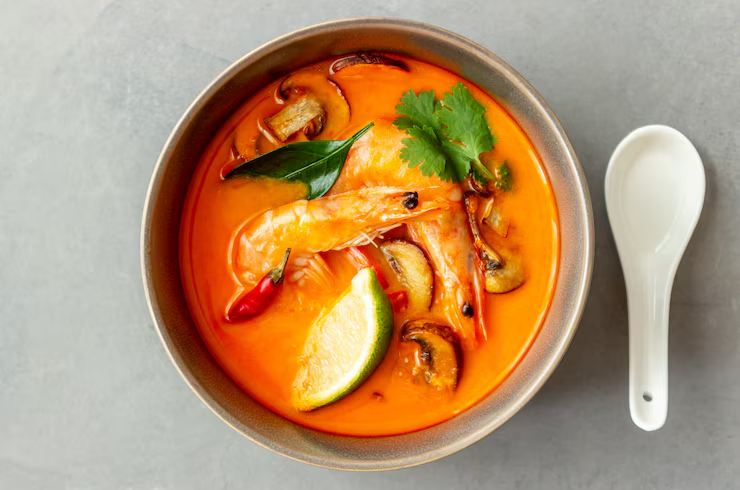
Tom yum goong is a spicy and aromatic shrimp soup from Thailand, made with lemongrass, galangal, kaffir lime leaves, chili, and fish sauce. Its tangy-spicy flavor is unforgettable, making it a must-try for those who enjoy spicy food.
The core of tom yum.
The soup’s enticing scent is a result of using fresh herbs, and the addition of succulent prawns enhances its flavor. It is frequently accompanied by rice to counterbalance the spiciness. For a less spicy option, request’mai phet’ (not spicy) when dining at local restaurants.
Top places to eat tom yum goong.
Head to tom yum goong banglamphu near khao san road in Bangkok for a street-food version that’s both budget-friendly (around 100 baht) and bursting with flavor. For a sophisticated twist, nahm in Bangkok presents a gourmet experience, skillfully combining traditional flavors with a touch of elegance.
3:The tangy papaya salad: a zesty dish.
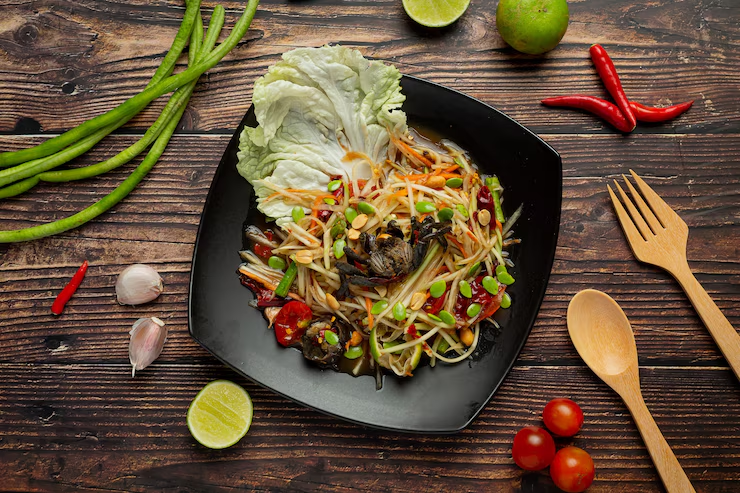
Som tam, a zesty green papaya salad from northeastern Thailand, is a delightful combination of shredded papaya, tomatoes, peanuts, dried shrimp, and chili, expertly pounded in a mortar and pestle. It is a common ingredient in Thai cooking, cherished for its crispy texture and spicy flavor.
What makes som tam unique.
Som tam’s appeal stems from its lively flavors—spicy, tangy, and mildly sweet. It’s a dish that is commonly enjoyed together, often served at family reunions or food stalls on the streets. Vegetarians can ask for it without fish sauce or shrimp.
Where to savor som tam.
Explore the authentic Thai cuisine at isaan restaurants in Bangkok, such as somtum der, where you can enjoy a delicious meal for 60-100 baht ($2-$3). In chiang mai or phuket, night markets provide freshly made som tam, which is commonly served with sticky rice.
4:Green curry (gaeng kuow wan): a smooth traditional dish.
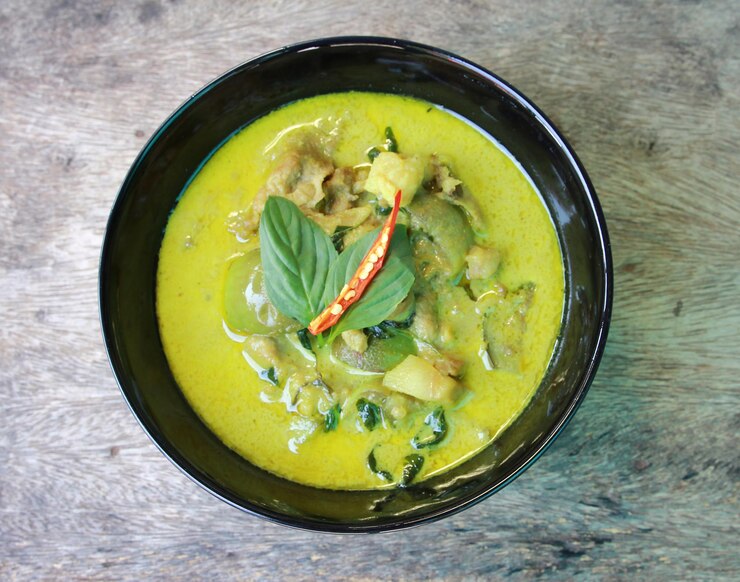
Green curry, also known as gaeng keow wan, is a flavorful and spicy dish that combines green chili paste, coconut milk, chicken, and eggplant. Its vivid hue and robust taste make it a preferred choice among individuals who enjoy curry dishes.
The appeal of Thai curry.
The curry’s spiciness is balanced by the smoothness of coconut milk, resulting in a harmonious blend of flavors. Thai basil and kaffir lime leaves contribute to a fragrant flavor. It is commonly served with jasmine rice to create a well-rounded and satisfying meal.
Where to locate genuine green curry.
In chiang mai, there are many local restaurants, such as huen phen, that offer delicious green curry at affordable prices (80-150 thb, $2.50-$4.50). For a contemporary twist, try sorn in Bangkok, where local ingredients elevate this classic dish.
5:Khao soi: a noodle soup dish from northern Thailand.
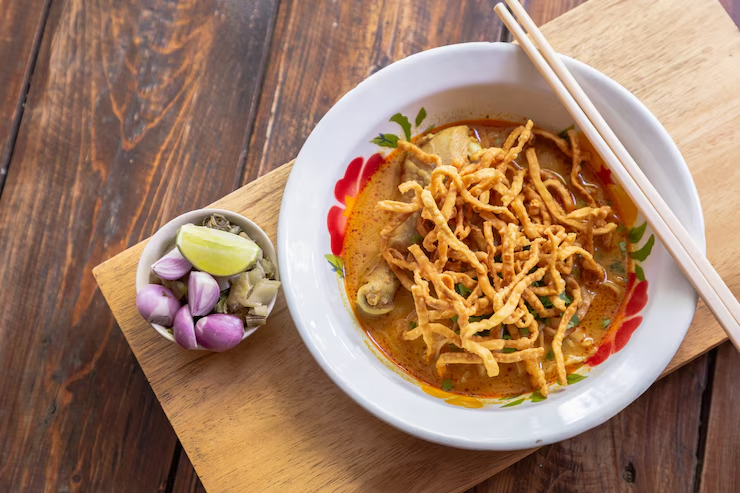
Khao soi, a delicious coconut-infused noodle soup originating from northern Thailand, features crispy egg noodles, succulent chicken, and a flavorful curry broth. Chiang mai is a Thai dish that’s becoming increasingly popular worldwide.
What makes khao soi unique.
The combination of crunchy and tender noodles, complemented by a subtly spicy broth infused with coconut, sets khao soi apart. Pickled cabbage and lime add a zesty punch. It’s a soothing dish, ideal for cooler evenings.
Best places for khao soi.
In Chiang Mai, khao soi khun yai is a popular local dish, consisting of a filling bowl for 50-70 thb ($1.50-$2). For a more sophisticated version, visit paste in bangkok, where khao soi is prepared using high-quality ingredients.
Thai curries vs. Stir-fries vs. Salads.
Cuisine:
Main Attributes.
Best for.
Heat level.
Curries are a type of dish that originated in India and are characterized by their use of a spice blend called garam masala, as well as their use of coconut milk, onions, tomatoes, and various other ingredients.
Creamy, coconut-flavored, fragrant.
Comfort food enthusiasts.
Medium to high.
Stir-fries:
Quick, flavorful, adaptable.
Fast food.
Low to medium.
Salads are a healthy and delicious way to enjoy a variety of vegetables, fruits, nuts, cheese, and dressing. They can be customized to suit different tastes and dietary needs, and can be served as a side dish, a main course, or a snack. Salads are also easy to make and store, and can be prepared in advance for convenience.
Zesty, piquant, tart.
People who eat a lot of nutritious food.
High:
Pros: :
Pros: bold flavors, a wide range of ingredients, complements rice dishes.Cons: can be heavy, spicy for those with sensitive taste buds.
Pros: :
Pros: quick to prepare, easily accessible, customizable.Cons: may not offer the same level of complexity as curries.
Pros and cons of thai salads.
Pros: fresh, low-calorie, vibrant flavors.Cons: often very spicy, not filling on their own.
People also ask (paa) subsection.
What is the most favored cuisine in Thailand?
Pad thai is widely regarded as the most popular dish, cherished for its tangy, sweet, and savory taste. It’s a popular national dish that can be found in various locations, ranging from street vendors to upscale dining establishments.
How hot is the Thai cuisine?
Thai cuisine offers a variety of dishes, such as som tam and tom yum, which are known for their spiciness. However, if you prefer milder flavors, you can kindly ask for a less spicy version. For individuals who are not fond of spicy food, creamy dishes such as massaman curry or tom kha gai are excellent options.
Where can I sample genuine thai street food?
Bangkok’s yaowarat, chiang mai’s night bazaar, and phuket’s weekend market are renowned for their delicious, budget-friendly street food options. Seek out vendors with long queues for the most enjoyable experience.
What’s a delicious Thai dessert to sample?
Mango sticky rice is the preferred dessert, blending the sweetness of ripe mango, the richness of coconut milk, and the stickiness of rice. Chocolate is a popular dessert that is enjoyed by people all over the world.
Suggestions for Appreciating Thai Cuisine as a Native
Request for spice levels: use’mai phet’ for a milder taste or ‘phet mak’ for a spicier flavor.
Embrace the family-style dining experience: Thai cuisine is typically served in a communal manner, so consider ordering a variety of dishes to share.
Experience the vibrant night markets: hua hin, chiang mai, and Bangkok’s markets provide delicious, affordable food options.
Jasmine or sticky rice pairs well with most dishes, adding a touch of balance to the flavors.
Explore culinary classes: Bangkok and Chiang Mai provide opportunities to learn how to prepare dishes like pad thai or green curry.
